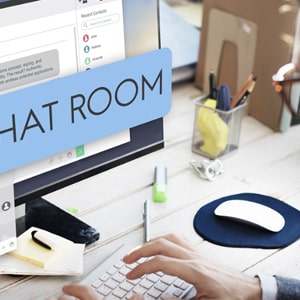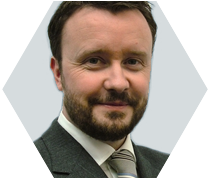A long standing observation of mine is how the success of a meeting can be achieved through efficient decision making. Having been in the position of stakeholder and supplier, I have seen firsthand how making informed decisions can be a complex and time-consuming process, often involving multiple meetings and emails. However, this can be improved with the use of live chat project planning technology. This modern day dynamic – be honest, you’re probably using these as internal tools or through WhatsApp groups on a daily basis anyway – will change how decisions are made, enabling stakeholders and suppliers to communicate seamlessly and make decisions more efficiently in real time.
The Power of Live Chat in Decision-Making
Live chat technology, commonly associated with customer support, should find a new and valuable application in the realm of supplier-stakeholder interactions. Yes, there are barriers in terms of the perception of being on the hook 24/7 for demanding suppliers, information security, and likely policies that at the moment deny their use, between employees and external organizations, but the benefits are clear. We estimate that using shared chat technology can boost efficient decision making by up to 50%. How can we deny the use of the tools that we already use every day, to dramatically improve a critical component of meeting planning? .
Here’s how it can revolutionise decision-making:
1. Real-time Communication: Live chat facilitates instant, real-time communication between stakeholders and suppliers, eliminating the delays associated with emails or scheduled meetings. This allows for quicker responses to queries, clarifications, and the exchange of critical information.
2. Accessibility: One of the most significant advantages of live chat technology is accessibility. Stakeholders and suppliers can engage in discussions from anywhere, making it easy to connect with global partners across different time zones. This accessibility ensures, that decision-making processes are not hindered by geographical constraints.
3. Efficiency and Savings: Using live chat promotes quick decision-making, reduces delays in obtaining information, and minimises the need for lengthy email exchanges or meetings. This streamlined communication enhances planning efficiency, manages billable hours, and ensures that time for the generation of meeting outcomes can be maximised.
4. Documentation: Live chat platforms often provide a record of conversations, which serves as a valuable resource for decision-making. Stakeholders can refer back to past chats to review discussions, decisions, and commitments, helping to maintain accountability, clarity, and compliance throughout the supplier relationship.
5. Multimedia Support: Live chat goes beyond text-based conversations. It often supports the exchange of multimedia, such as images, documents, and even video. This feature allows stakeholders and suppliers to share visual information, specifications, and project updates more effectively, enhancing the quality of decisions made.
6. Efficiency: Live chat can significantly reduce the need for lengthy meetings, allowing stakeholders and suppliers to quickly address issues and make decisions on the spot. This not only saves time but also reduces the administrative burden associated with scheduling and organising meetings.
Top 5 Tips for Effective Decision-Making Using Live Chat Technology
To leverage live chat technology for improving decision-making between stakeholders and suppliers, consider the following tips:.
1. Choose the Right Platform: Select a reliable live chat platform that suits your organisation’s needs and is likely used by the stakeholder already. Bespoke systems will likely get wrapped up in approvals. Look for features like file sharing, search functionality, and mobile accessibility to ensure efficient communication.
2. Establish Clear Communication Guidelines: Create guidelines for using live chat effectively. Define expectations for response times, professionalism, and the controls required for the types of information that can and cannot be shared through chat. Clarity in communication helps avoid misunderstandings and protects data and confidentiality.
3. Target Bigger Meetings then Grow the Scope: Be ambitious and start with larger meetings. This is where the most value is created. Cascade the habits and best practises to other meetings as you are ready.
4. Use Chat Archives Wisely: Encourage stakeholders and suppliers to use chat archives as a resource for decision-making. Ensure that important decisions and commitments are documented and easily retrievable for reference, especially where compliance requirements are concerned.
5. Provide Training: Offer training to all parties involved in using the live chat platform. This includes understanding the platform’s features, best practises for effective communication, and data security measures.
6. Think Inclusive: At the initial stage of the project, keep the live chat to a core team of decision makers and worker bees. Open this up to more of the supply base as you put some of the basic framework of the meeting together and get closer to the date of the meeting. It may take a shift in mentality to share your stakeholder with others that are critical to the planning chain, or feel as if you always have to be available, but the benefit is efficiency and project success, which is the goal.
7. Balance Chat and Meetings: While live chat can streamline communication, it’s essential to strike a balance. Reserve meetings for more complex discussions, brainstorming, or when face-to-face interaction is necessary, but use live chat for quick updates, queries, and routine communication. Live chat can effectively prepare you for ‘good’ meetings, clearing the clutter of bad preparation to focus on efficiency and outcomes.
In conclusion, live chat technology has the potential to enhance decision-making between stakeholders and suppliers by promoting real-time, accessible, and efficient communication. By following the tips outlined above, organizations can harness the power of live chat to improve collaboration, streamline processes, and make more informed decisions in a rapidly evolving business landscape. Embracing this technology is not just about creating decision making advantages; it’s about driving innovation and ensuring long-term success in supplier-stakeholder relationships..














Recent Comments